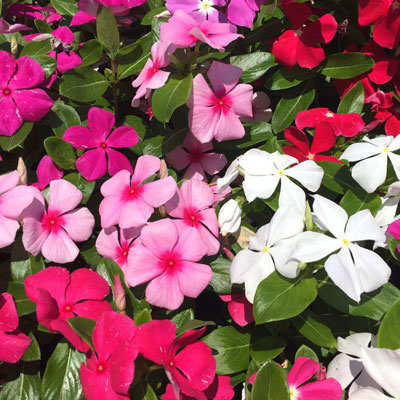Call Out for Cora!
There was a time when periwinkles were mainstays in Texas summertime landscaping. You had copper plants in the background and periwinkles in front of them. White periwinkles with red eyes. Year after year.
And then sometime back in the 80s a soil-borne disease called aerial Phytophthora moved in like a plague and killed entire beds. Plants wilted and browned. On close inspection, their stems looked like someone had put a hot knife alongside them. There were browned lesions, and all the tissues above were shriveled and dead. Few plants were left standing.
The disease carried over in the soil. In fact, it even came into our gardens in potting soil from the nurseries, so we soon became snake-bit, afraid to give periwinkles any more space.
And then, along came Cora…
One of the world’s great seed-breeding companies introduced a new strain of periwinkles called Cora and they touted its resistance to the disease. We tried them skeptically at first, but then we began to get up our courage. And we also noted the wonderfully rich red tones that were included with the new series. We truly had something “new and improved.”

Photo: It’s hard to pass Coras by when you see a glorious blend like this in the nursery.
Secrets to getting the most out of Cora periwinkles…
• Full sun is a must. It’s nice to have a plant that requires it.
• Don’t rush to plant them. Mid-May is plenty early. June is fine, too.
• Prepare their soil carefully. Raised beds are essential. Perfect drainage is a must.
• Drip irrigation works well. If you use overhead irrigation, do so in early morning so the plants can dry very quickly.
• Apply bark mulch to the bed to minimize splashing of water up onto the stems.
• Grow periwinkles in pots for maximum drainage.
